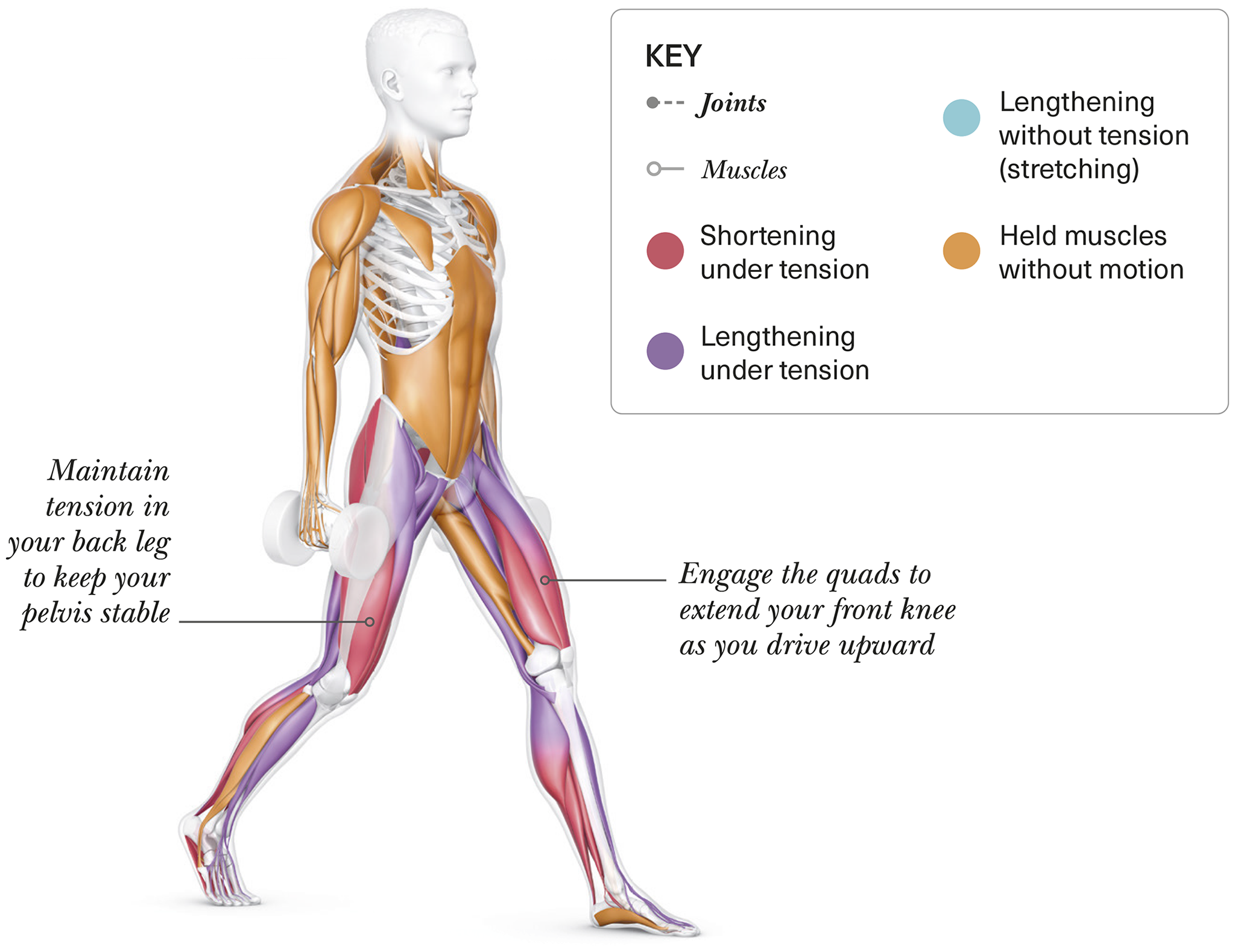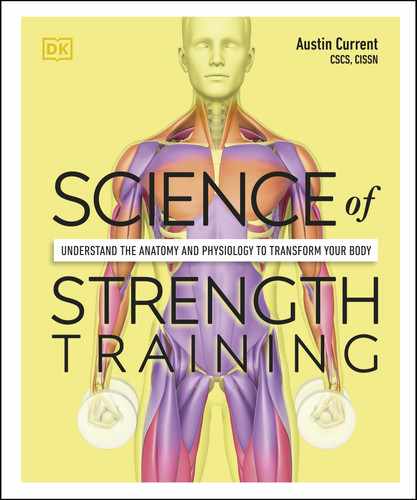stationary LUNGE WITH dumbbellS
The lunge is a useful exercise for training the quadriceps and glutes while also challenging the muscles that stabilize the core. Both legs work hard, but the main focus is on the muscles of the front leg.
the big picture
As you lunge, think downward rather than forward. When in the lunge position, your ear, hip, elbow, and hand should be aligned vertically. Throughout the exercise, ensure your torso is stable, your core is engaged, and your weight is evenly distributed through your front foot and the ball of your back foot. Hold the weights at your side and carry them naturally into the lunge motion. To be sure to exercise both legs evenly, work alternate legs each rep or keep the leg consistent through a set.
Beginners can start with 4 sets of 8–10 reps; discover variations on this exercise on and other targeted sets within the training programs.
preparatORY stage
Stand with your feet shoulder-width apart, holding the weights at your side. Take a step forward with one leg with your normal stride. This is the starting position.

n Double-tap image to read the labels
stage one
Breathe in, engage your core, and drive your hip down as you drive your front knee forward and bend your back knee toward the floor. Control this lowering phase of your front leg to protect your knees as you approach the end position. Hold the lunge for 1 second.

n Double-tap image to read the labels
ANTERIOR-LATERAL VIEW
Upper body
Muscles of the core, upper back, arms, and shoulders help stabilize the upper body. Maintain this tension throughout the exercise to help maximize strength.
Back leg
Maintaining contact with the ground allows the quads to continue working alongside the gastrocnemius and soleus in helping stabilize the knee. You will feel the tension in the quads, mainly from the rectus femoris being challenged.
Front leg
Muscle tension will be biased to the quadriceps, glutes, and adductors. The quads work hard in both legs, as they eccentrically control flexion at the knees and extension at the hip of the back leg while concentrically controlling flexion at the hip on the front leg. The glutes of the front leg also lengthen as the hip flexes.
stage two
Breathe out, engaging the glutes and quads, and push through the ball of your foot to raise your body back to the starting position. Ensure you are balanced and stable before the next rep. Repeat stages 1 and 2.

n Double-tap image to read the labels
![]() Common mistakes
Common mistakes
Taking too big or too small a step forward results in poor form for your lunge. Don’t round your upper back.
